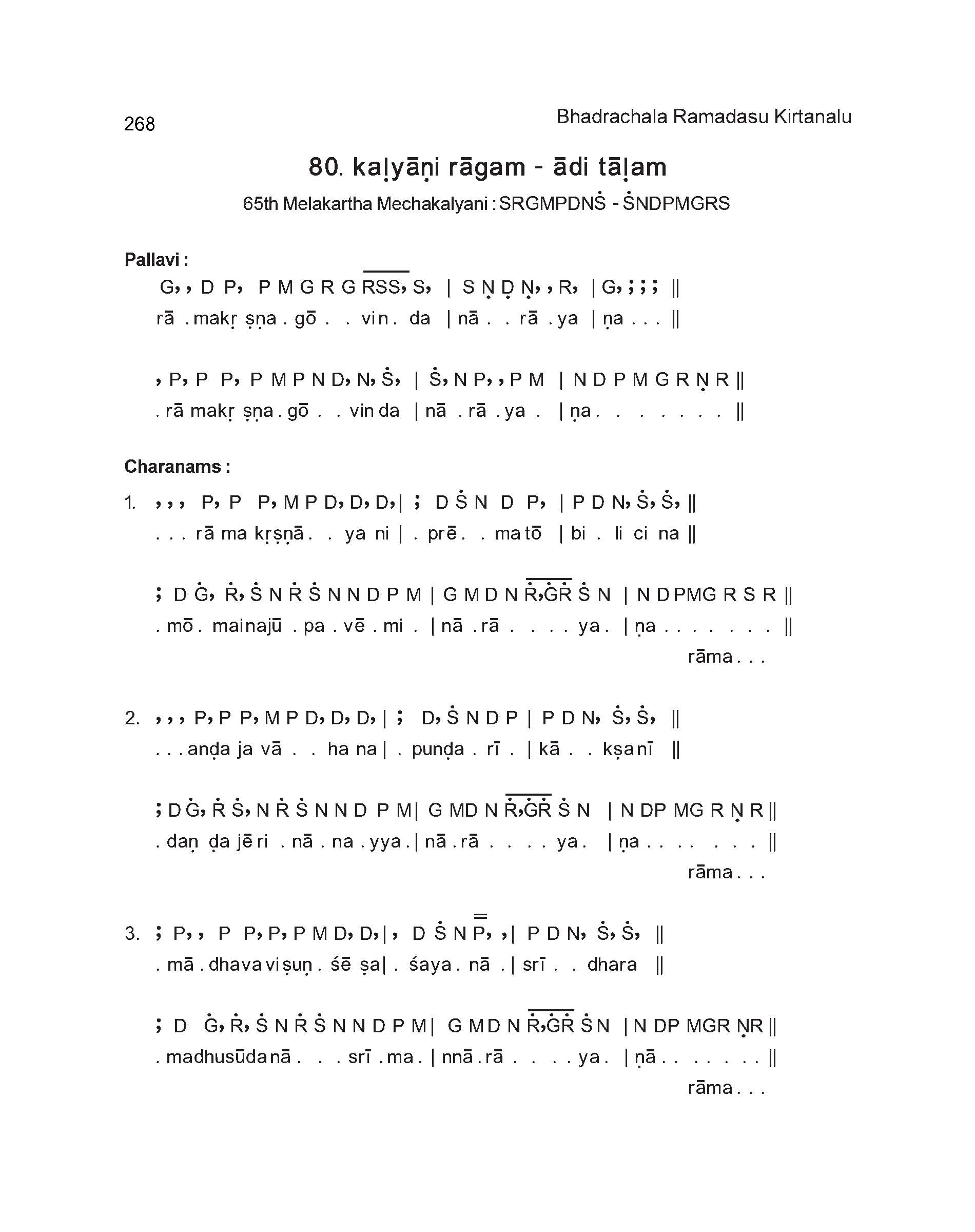


There are different categories of Sadharana Geethas: If a Geetha consists of two sections (khandikas) as in Kalyani –‘Kamala Jadala’, the second section is sung after the first. Geethas are sung from the beginning till the end without repeating the avarthas. They are in Ekakshara kalam (one swara for each count). Geetha are compositions in Ati Chitra Tama Marga. This will not be in keeping with the rhythmical construction of the composition. Likewise a Geetha in chaturasra Jaati rupaka talam should not be taken as Trisra Jaati Eka tala with two swaras for each count and so on. The deergha swara being reckoned as two swaras will have two aksharas in the sahitya or a deerga three also this being so, a Geetha in Chaturasra Jaati Dhruva taala should not be taken as Trisra Jaati Triputa tala considering two swaras for each count. In a Geetha the number of swaras present in an avarthas is equal to the number of aksharas forming the avartha. The Geetha in Bhairavi raga ‘Sri Ramachandra’ and the Geetha in Nata raga ‘Amari Kabari’ are well known examples. There are instances of famous Sanskrit slokas which have been cleverly introduced as sahityas for sanchari geethas. These syllables remind one of similar syllables occurring in same ganam. They are introduced for ornamentation only. These phrases lend a characteristic beauty to the sahitya of the geethas. They are called Matrika padas or Geethalankara phrases. Sometimes meaning less phrases are found interspersed in it. For each note of the Dhatu there is usually a syllable in the sahitya. The raag swarupa is well brought out in each case. Neither intricate combinations nor terse sancharis are found in its music.

There are no sangathis or variations and the flow of music is natural. Sapta Tala Geetha in Nata ragam – ‘Gana Vidya Durandhari’ – by Pydala Gurumurthy Sastry. Samanya Geeethas are usually in praise of God, Musical luminaries and Acharyas. Samanya (Sanchari / Sadharana/ Lakshya) Geetha:.There are geethas in all the sapta talas and their varieties. Geethas are learnt after a course in the preliminary swara exercises and alankaras. Some geethas are concluded by repeating a portion of the opening part. Some geethas have two sections (khandikas) and some have three. The Geetha is sung without repetition from beginning till the end. It is continuous composition without the sections of Pallavi, Anupallavi and Charanam. The music of the Geetham is simple melodic extension of the raga in which it is composed. But in music it signifies a particular type of composition. The union of Dhatu and Matu is known as Geetha, i.e., the union of music and words (swara and sahitya) is said by the learned to constitute a Geetha.


 0 kommentar(er)
0 kommentar(er)
